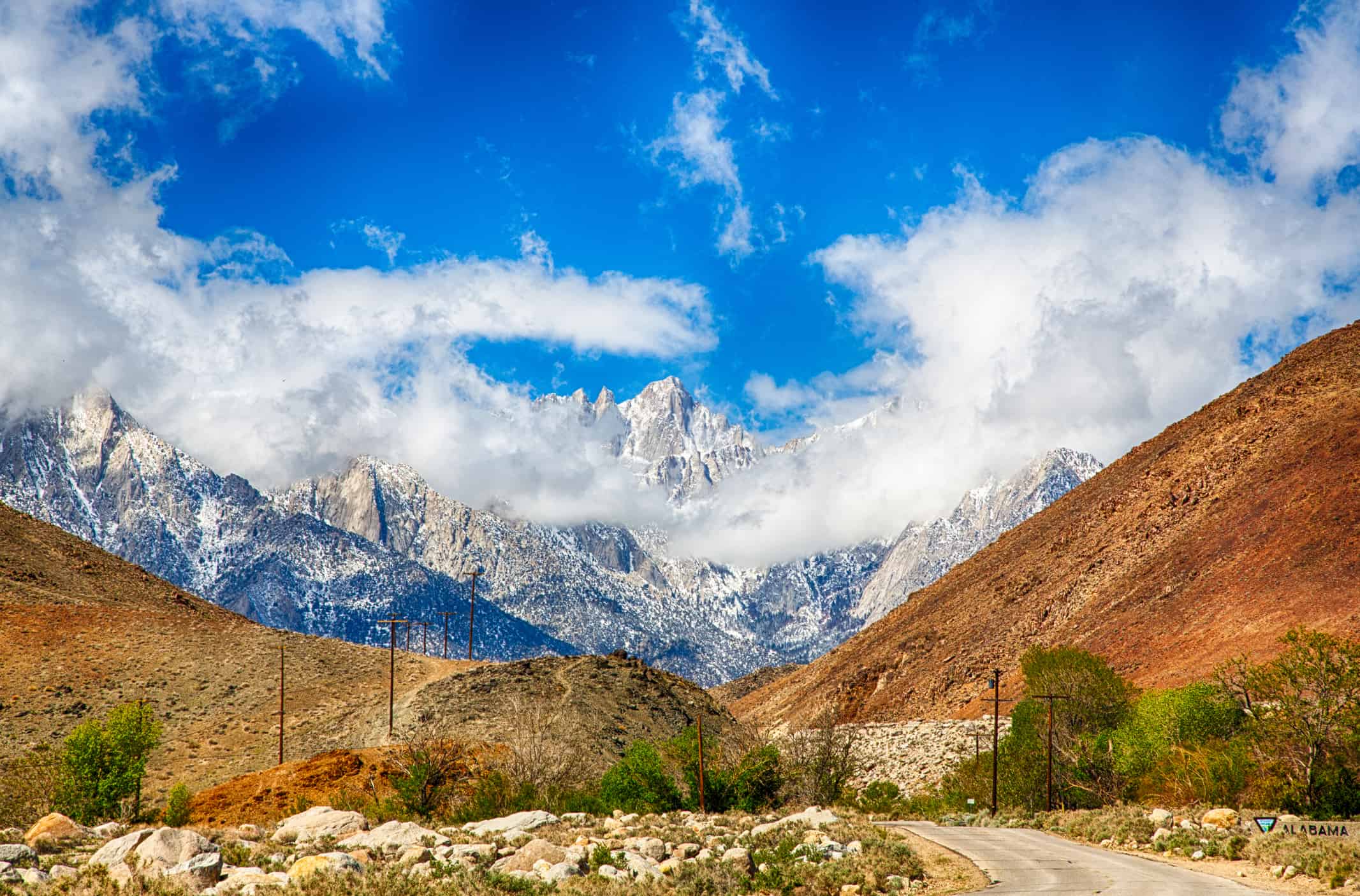Nestled in the dry and cold of the Sierra Nevada, lies Mount Whitney. One of the most iconic peaks in the U.S., it’s more than just a challenging summit for mountaineers. What makes this mountain unique? What makes its history and surrounding environment a subject of fascination for millions? Here are ten incredible facts about Mount Whitney that will blow your mind!
1. Highest Peak in the Contiguous U.S.
Mount Whitney stands tall at 14,505 feet (4,421 meters), making it the highest summit in the contiguous (lower 48) United States. Only the peaks in Alaska, like Denali, surpass it in height within the U.S. Being the culminating summit of the Sierra Nevada, Mount Whitney dominates the skyline and offers unparalleled panoramic views. On a clear day, from the summit, you can see across the vast expanses of California and even into Nevada.
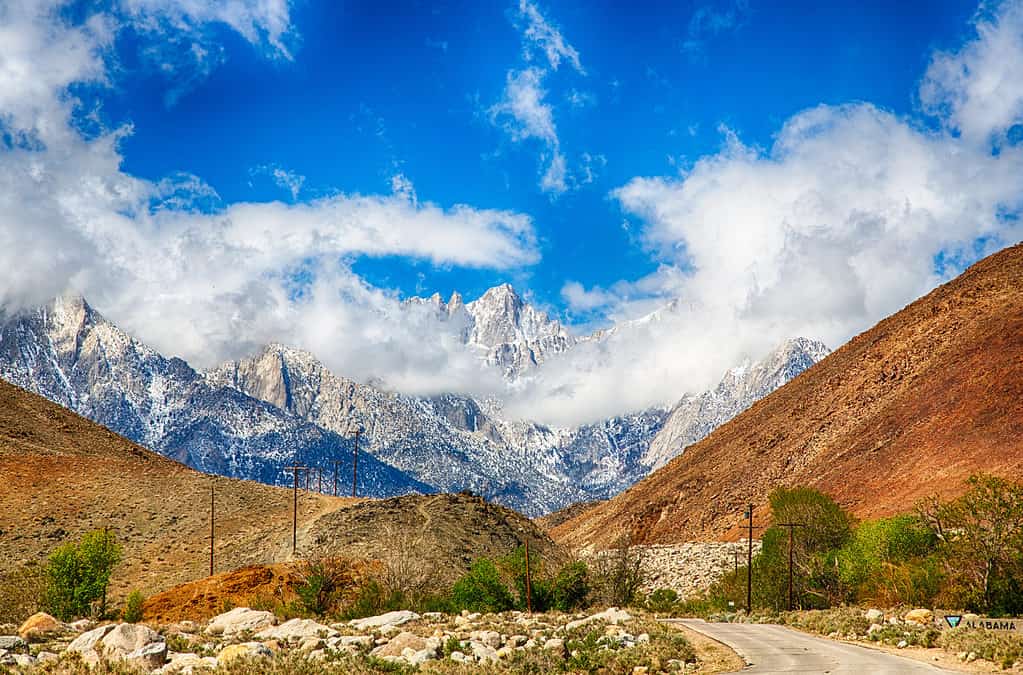
The peak of Mount Whitney as it breaks through the clouds.
©iStock.com/garytog
2. A Geological Wonder
Mount Whitney is a relatively young mountain. Tectonic activity thrust Mount Whitney upwards relatively recently, making it geologically young. Glacial activity carved out its towering granite formations, and even today, you can observe the scars and pathways from ancient glaciers. The mountain’s age makes it a fascinating subject for geologists because it gives them more information to work on, as opposed to older mountains. Various layers, mineral compositions, and formations on the mountain provide insights into different geological eras. As tectonic forces push it upwards even now, you can spot distinct rock formations, folds, and crevices. These are important for those who want to study the Earth and its shifting tectonic plates which also offer insights into glacial erosion.
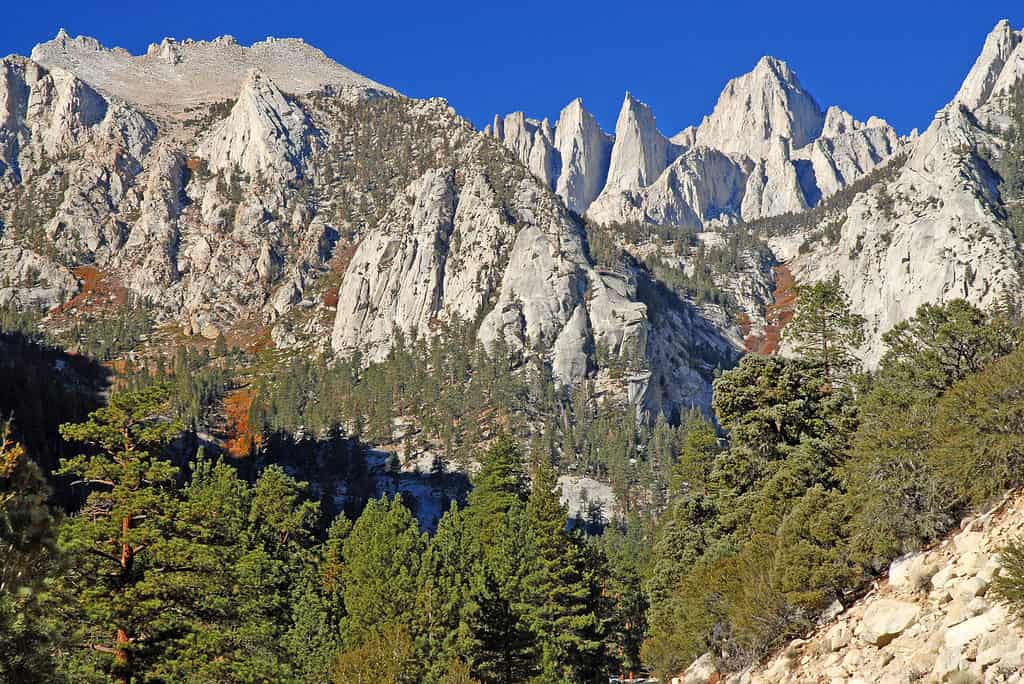
The diverse ecology of Mount Whitney.
©nyker/Shutterstock.com
3. A Day’s Journey from Lowest to Highest
Incredibly, Mount Whitney is situated just 84 miles away from the Badwater Basin in Death Valley, the lowest point in North America at 282 feet below sea level. So if you, like other adventurous souls, wanted to go from the nation’s lowest point to the highest in a single day, you could do it! But, be warned, you will experience a dramatic change in both altitude and environment. While this may not seem like much, you could get sick pretty quickly if you ascended to very high levels very quickly. This unique juxtaposition of altitudinal extremes, from Death Valley to Mount Whitney, provides a stunning contrast of landscapes: from arid desert basins with salt flats and dunes to alpine conditions with snow-capped peaks and pristine lakes. This trek is perfect for an adventurous soul!
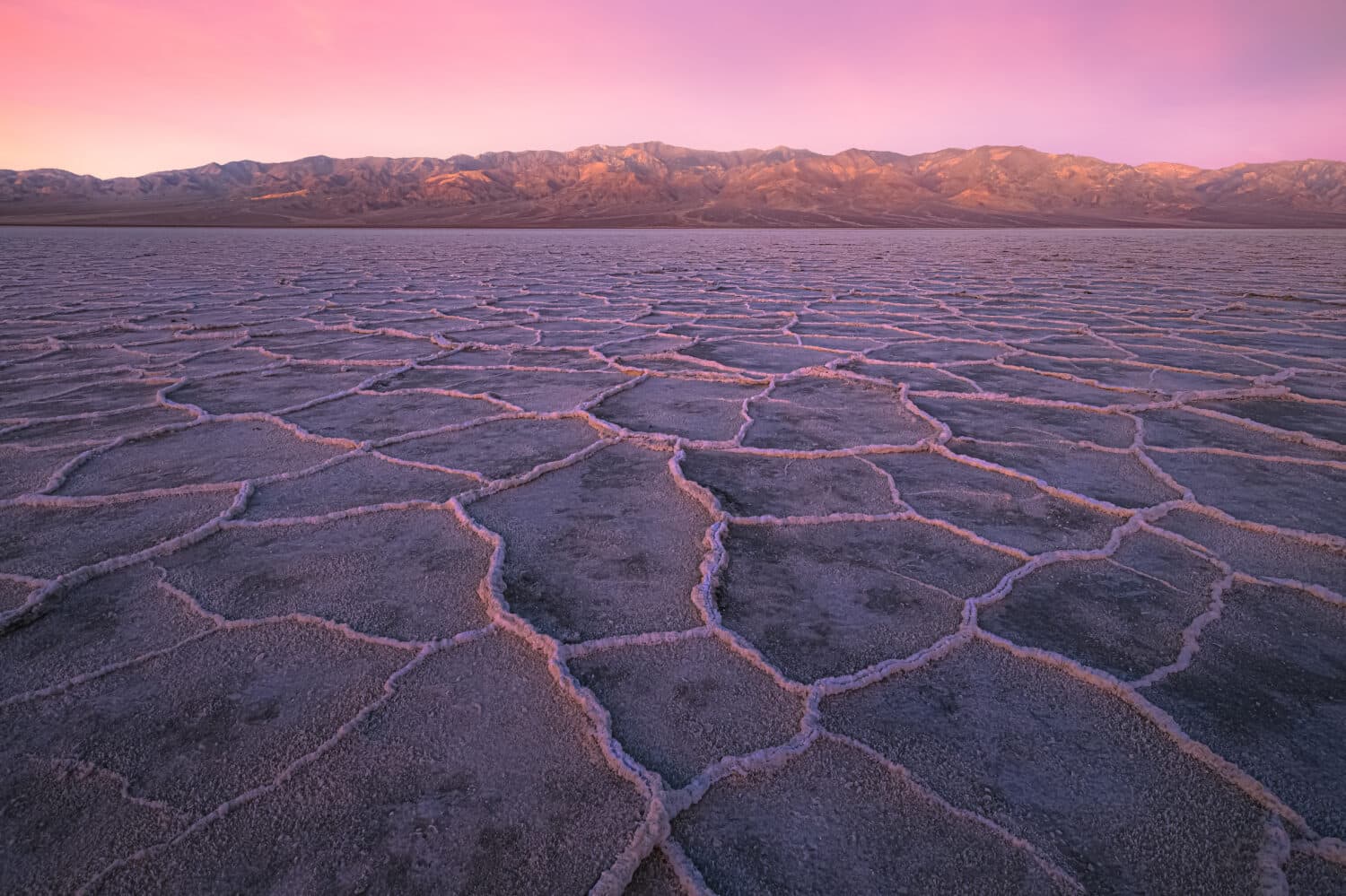
Badwater Basin.
©Stephen Bridger/Shutterstock.com
4. A Hiker’s Paradise
Now that you’ve decided you want to climb to the top – which trail do you take? The Mount Whitney Trail is the most popular route to the summit and is one of the most beautiful trails in California. The trail starts at Whitney Portal at an elevation of 8,360 feet above sea level. It’s a 22-mile round-trip hike that offers stunning vistas, challenging terrains, and the immense satisfaction of reaching the highest point in the lower 48 states. The Mount Whitney Trail is challenging not only in its height but also because of the rough terrain and innumerable switchbacks. However, as you ascend, every switchback provides a different perspective on the Owens Valley below, and the flora and fauna change with the altitude, ranging from verdant pine forests to sparse alpine vegetation.

Camping on Mt. Whitney.
©iStock.com/Florian Schipflinger
5. Home to Ancient Life
The bristle cone pines in the surrounding areas are among the oldest living organisms on Earth. Some of these ancient trees, found at higher altitudes around Mount Whitney, are nearly 5,000 years old! To put this into perspective – some of these trees existed before the pyramids of Egypt were even built. For scientists, these trees are a treasure trove of information. Their rings provide climatic data, offering insights into past climate conditions, environmental changes, and even significant volcanic eruptions or other atmospheric events. By studying these rings, researchers can piece together a more accurate history of our planet’s environmental shifts. Local indigenous communities believe that the trees’ longevity and resilience symbolize eternal life, continuity, and the interconnectedness of life and nature. When hikers consider that these weathered and fragile-looking trees have stood for millennia, outlasting civilizations and braving harsh climates, they often feel awed.
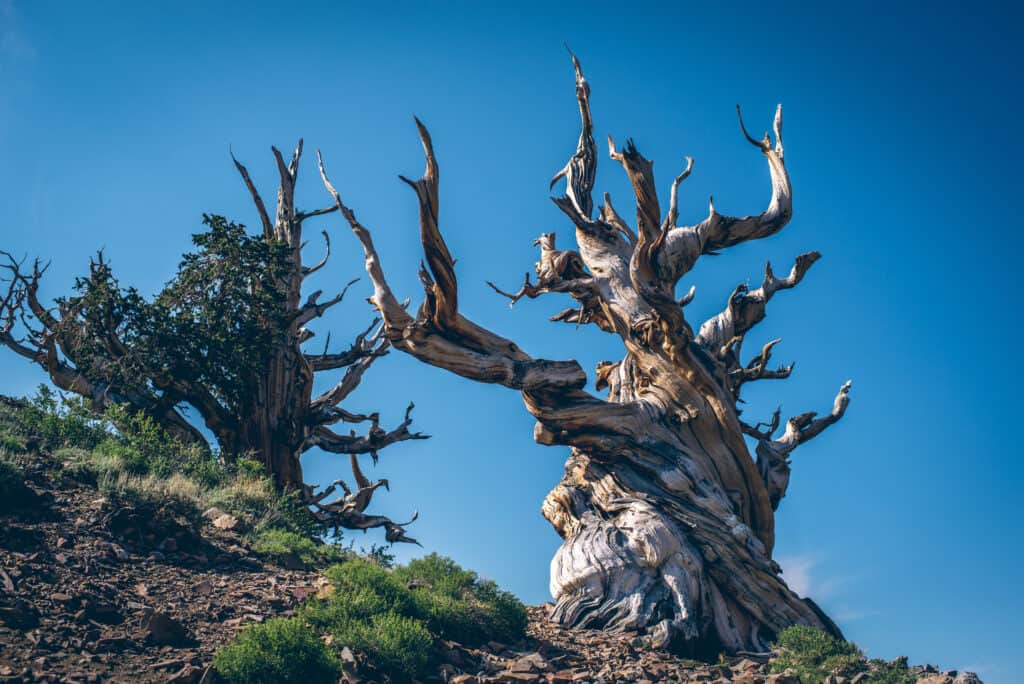
A bristlecone pine (
Pinus longaeva).
©doliux/Shutterstock.com
6. An Overcrowded Peak?
As with saying goes – too many cooks spoil the broth. Mount Whitney’s hasn’t gone unnoticed and its popularity has surged over the years. So much so that there’s a lottery for hiking permits to manage the foot traffic and minimize environmental impact. The lottery system ensures that the trail doesn’t get overcrowded and that the mountain’s fragile ecosystem is preserved. This wasn’t just an administrative decision. The region is a unique biome, so an influx of hikers can disrupt animal routines, erode soil, and introduce foreign elements. All of this can destabilize this delicate balance. An essential component of the permit process involves educating hikers about the “Leave No Trace” principles. It’s not just about regulating numbers but ensuring those who do hike are aware of their responsibilities. This includes packing out trash, respecting wildlife, and minimizing the impact on the trail.
Embed from Getty Images7. A Mountain of Many Names
The mountain was known by many different names before it was officially named “Whitney.” The Native American Paiute tribe called it “Too-man-i-goo-yah,” which means “the very old man.” Before modern trekking tools and techniques, indigenous tribes revered and respected its challenging terrains, cold conditions, and the spirits they believed resided there. It was only in 1864 that the California State Geological Survey named it after Josiah Whitney, the State Geologist of California. Three local fishermen, Charley Begole, Johnny Lucas, and Al Johnson, were the first to climb to the top. Residents from Owens Valley wanted to pay homage to them and name the mountain “Fisherman’s Peak.” However, the Governor vetoed the bill and the original name still stands today.
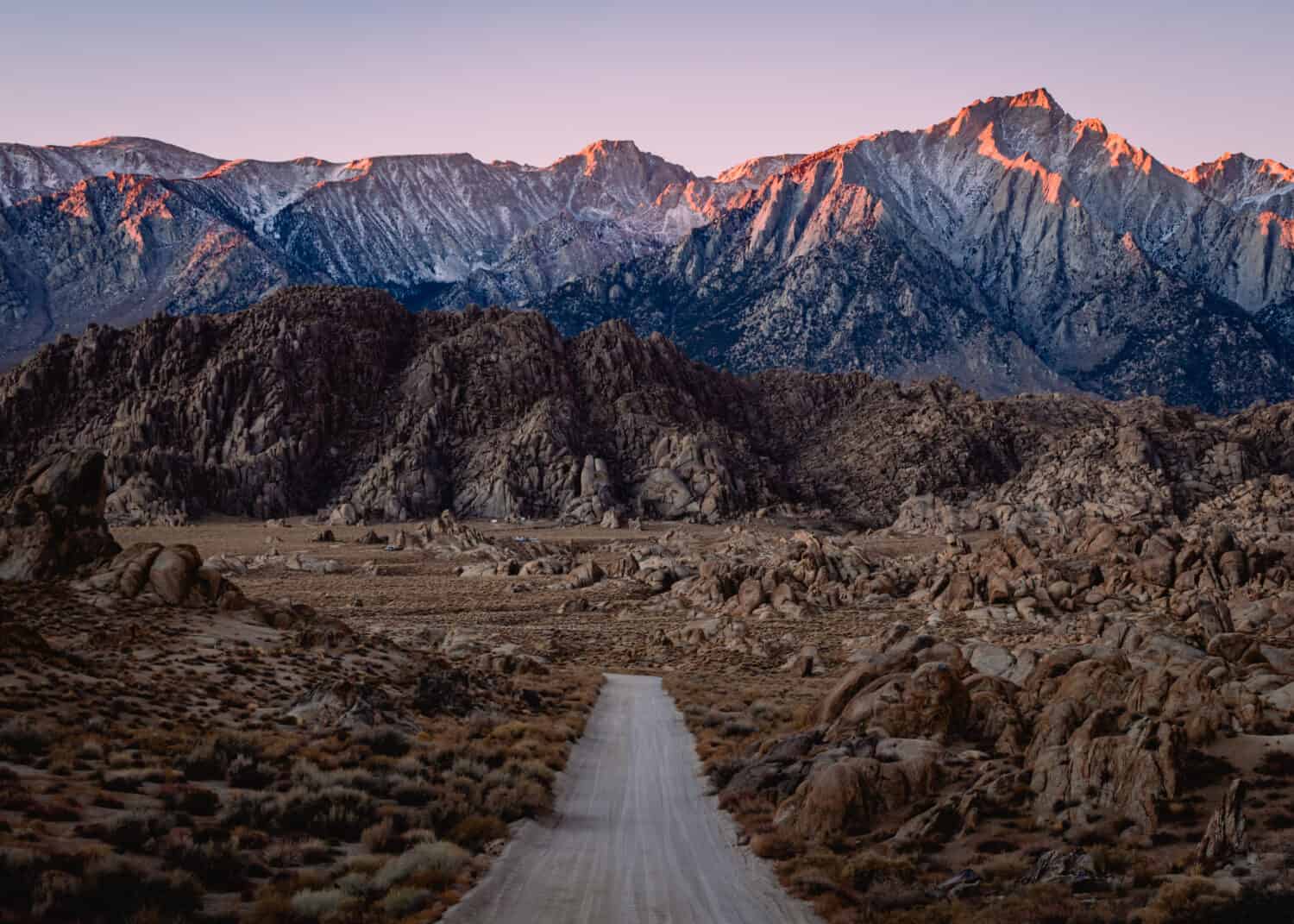
Movie Road, Alabama Hills.
©chasehunterphotos/Shutterstock.com
8. Challenges Beyond Altitude
While the height of Mount Whitney poses its challenges, the weather itself is unpredictable, with snowstorms occurring even in summer. As you climb higher, the atmosphere gets thinner, making each breath less oxygen-rich. This lack of oxygen can lead to altitude sickness. This is a condition that can manifest as dizziness, nausea, headaches, and shortness of breath. Even on cooler days, the sunlight can be harsh and intense. It can lead to sunburns much faster than one might expect at lower elevations. The altitude, combined with the thin atmosphere can lead to dehydration as well. This isn’t a mountain to underestimate. Every year, rescue teams are called to assist hikers on Mount Whitney. Often, it’s because individuals underestimated the mountain’s challenges or overestimated their preparedness.
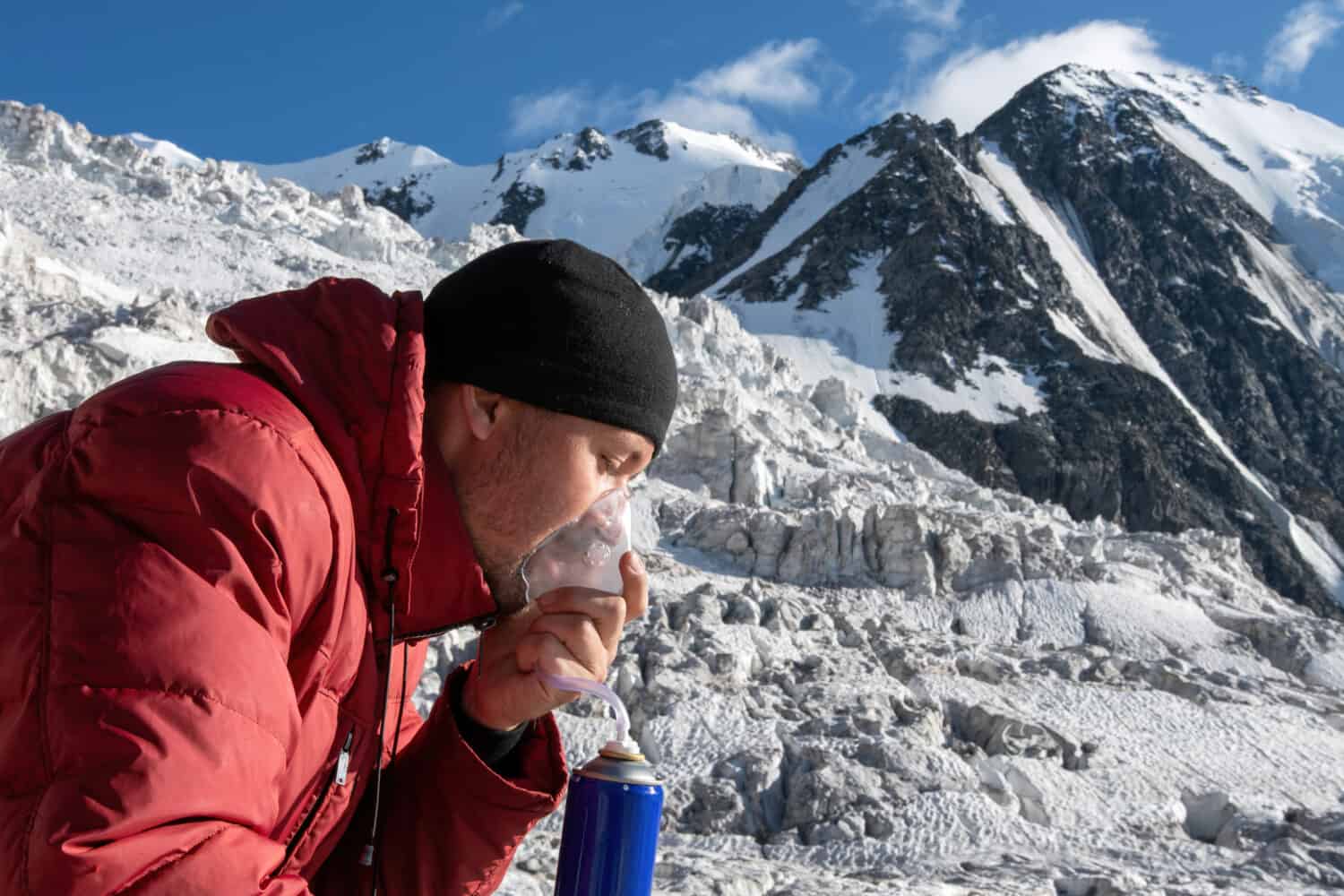
A man suffering from altitude sickness.
©Kirill Skorobogatko/Shutterstock.com
9. More than Just One Trail
While the main trail is the most popular route, several paths lead to the summit. Here are a few:
- The John Muir Trail (JMT): Spanning 211 miles and culminating at Mount Whitney, it takes trekkers through the heart of the wilderness. From the pristine alpine lakes of Yosemite Valley, through the deep canyons of Kings Canyon National Park, and to the giant sequoias of Sequoia National Park.
- Mountaineer’s Route: For those looking for a more challenging path to the summit, the Mountaineer’s Route offers a steeper, more direct climb. Instead of the switchbacks of the main trail, this route demands scrambling chutes and technical mountaineering knowledge.
- Pacific Crest Trail (PCT): Although the PCT doesn’t lead directly to Mount Whitney’s summit, it passes nearby. Many trekkers take a detour to conquer the peak. The PCT, stretching from Mexico to Canada, showcases the diverse landscapes of the American West and Mount Whitney stands as the crowning jewel on this trail!
- Whitney Portal to Lone Pine Lake: This is for those not keen on reaching the summit but still wanting to experience the beauty of the region. The hike from Whitney Portal to Lone Pine Lake offers a shorter, yet stunning alternative. This route allows hikers to immerse themselves in the alpine environment, witness the grandeur of the mountain, and enjoy a serene lakeside setting. All without the challenge of summiting.
- High Sierra Trail: Beginning at Crescent Meadow in Sequoia National Park, the High Sierra Trail takes trekkers on a cross-country journey, ending at Mount Whitney. Along the way, it offers some of the most breathtaking vistas of the Sierra Nevada range, including the Great Western Divide.
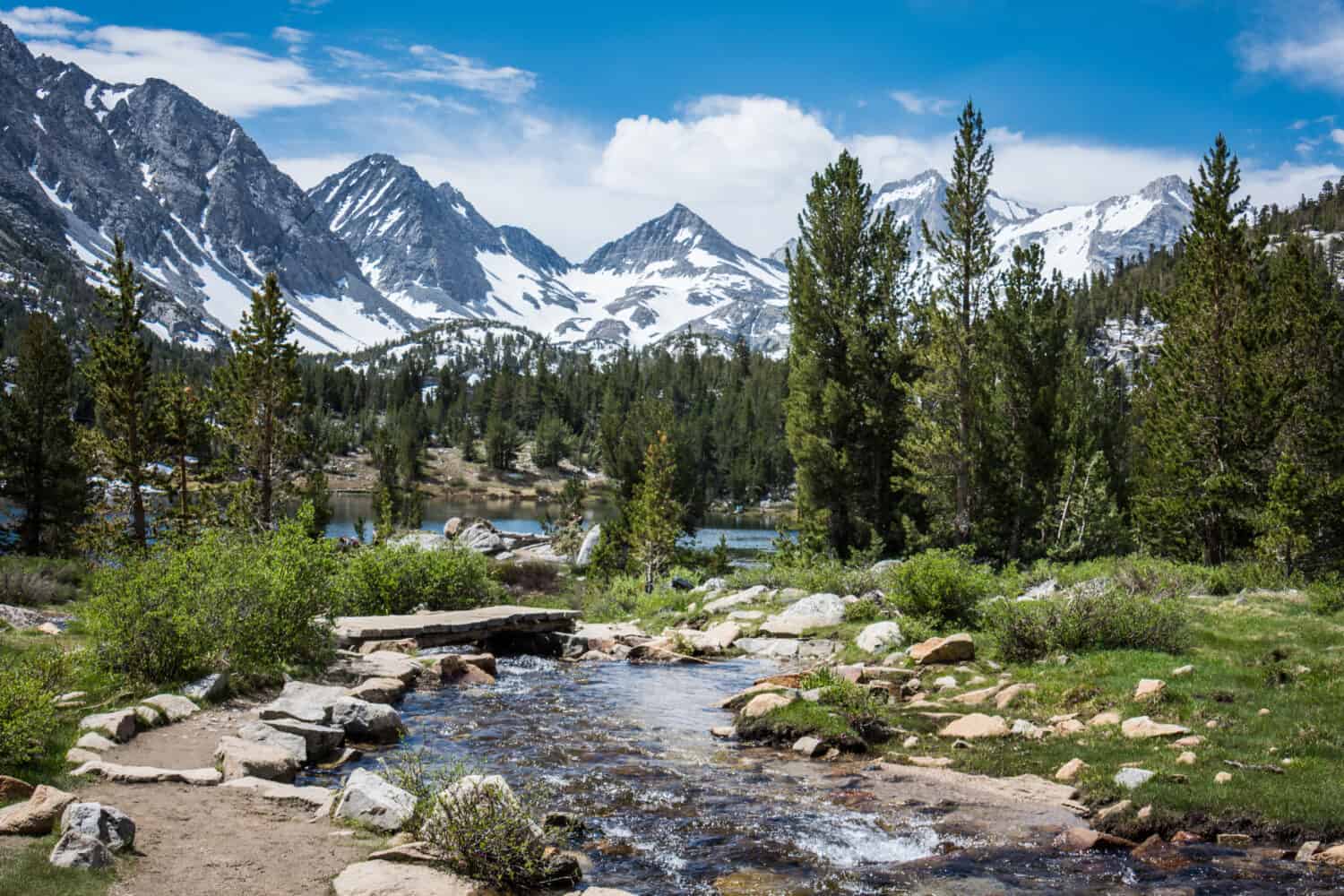
Views along the John Muir Trail.
©melissamn/Shutterstock.com
10. Film Star Mountain
Mount Whitney’s dramatic landscapes have not gone unnoticed by Hollywood. Filmmakers shot many scenes, especially in the 1940s and 50s, in the Alabama Hills area at the base of Mount Whitney. The otherworldly landscapes around Mount Whitney have often doubled for alien planets in sci-fi films. The barren landscapes, juxtaposed against stark granite cliffs, create visuals that are both familiar and alien. This background creates a cinematic frame, transporting audiences to the Wild West or alien worlds.
Additionally, filmmakers have also shot documentaries here, focusing on nature, conservation, and the environment. Through these narratives, the mountain becomes a central character, telling tales of ecological balance, human intervention, and the pressing need for conservation in the face of increasing tourism and climate change.
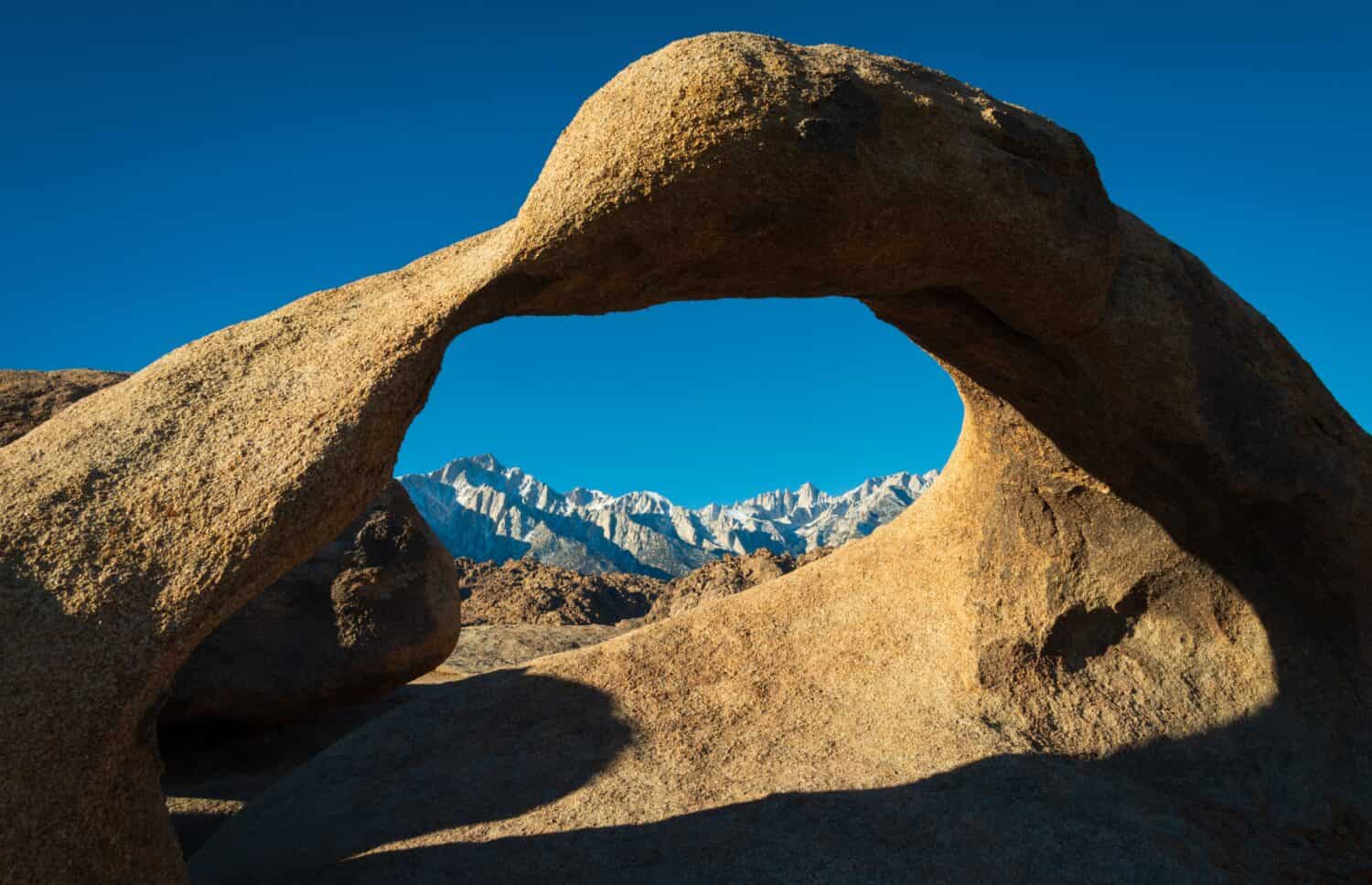
Mount Whitney’s alien world.
©Zack Frank/Shutterstock.com
Mount Whitney is not just a summit to conquer. Whether you’re an avid hiker planning an ascent or a nature lover content with admiring from a distance, Mount Whitney offers something for everyone!
Thank you for reading! Have some feedback for us? Contact the AZ Animals editorial team.

